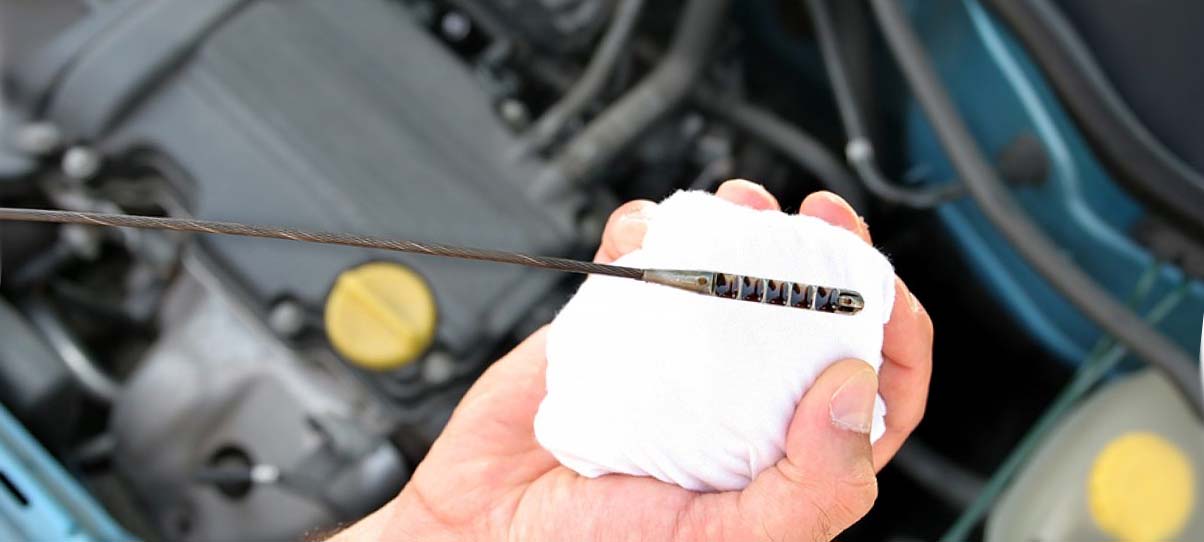Engine oil is a vital component of your vehicle. It helps to keep the engine running smoothly and efficiently and prevents damaging components from wearing down due to friction. The color of your engine oil can provide you with important information regarding the condition of your engine, so it is important to know what different colors of engine oil mean. This article will discuss the various colors that engine oil can assume, such as black, red, brown and yellow, what causes the color change and what it indicates about your vehicle’s engine.
Black Oil
Causes of Black Oil
The most common color for motor oil is black, which normally occurs due to a combination of fuel dilution (fuel getting into the crankcase), combustion by-products (oil breakdown), air entering the crankcase due to negative pressure or simply because it has been in use for a while (oxidation). All these factors contribute to making motor oils darker over time until they turn black.
What it Means When Your Oil is Black
The presence of black colored motor oil does not necessarily indicate an immediate problem; if all other factors are normal (such as viscosity) then there may be no need for concern. However, if the oil is overly dark and gritty it could indicate that there is a problem and would need to be changed.
Red Oil
Causes of Red Oil
Red engine oil usually occurs due to an additive called molybdenum disulfide (MoS2). MoS2 is often found in synthetic oils, as well as some diesel and motorcycle oils. It helps by forming a thin layer of lubrication between the moving parts and reducing the friction generated over time.
What it Means When Your Oil is Red
The presence of red colored engine oil does not indicate any problems with your vehicle, but rather indicates that the oil has been mixed with an additive such as MoS2, which could be beneficial for your vehicle’s engine.

Brown/Dark Brown/Sludgy Brown/Blackish-brown Colored Oils
Causes of These Colors
These colors usually occur when there are contaminants in the motor oil, such as dirt, dust particles or other debris. Additionally, if the oil has been in use for too long it can become darker in color due to oxidation. The presence of these colors signals that it may be time to change your motor oil. Hera you can choose Best Oil for 5.4 Triton.
What these Colors Indicate
The presence of these colored motor oil indicates that there are contaminants in the oil, or that it has been in use for too long, both of which can lead to damage and wear on your vehicle’s engine components. It is important to immediately change your motor oil and filter when this occurs.
Yellow or White Colored Oils
Causes of These Colors
If your engine oil has a yellow or white color this usually means that it has been mixed with coolant due to a head gasket leak. This can also occur due to a cracked block or a cracked cylinder head among other possible causes.
What these Colors Indicate
The presence of yellow or white colored motor oil indicates an internal coolant leak from somewhere within the engine block, such as from a cracked block, head gasket failure, or another issue related to the cooling system. It is important to address this issue as soon as possible before any major damage occurs due to coolant entering the engine’s lubrication system.
| COLOR | CAUSE | WHAT IT MEANS |
| Black | Fuel Dilution/Oxidation | No immediate problems if all other factors are normal |
| Red | Molybdenum Disulfide Additive | Indicates the presence of a beneficial additive |
| Brown/Dark Brown/Sludgy Brown/Blackish-brown | Contaminants in the oil or oxidation | Indicates the oil needs to be changed |
| Yellow/White | Coolant Leak | Indicates an internal coolant leak |
Conclusion
Understanding the various colors of engine oil and what they indicate can help you better assess and maintain your vehicle. It is important to know what causes the different colors, as well as what each color means in order to make sure that your engine stays running smoothly. If you ever come across any unusual colors for your engine oil, it is best to get it checked out immediately to avoid any further damage or wear on your vehicle’s components.



